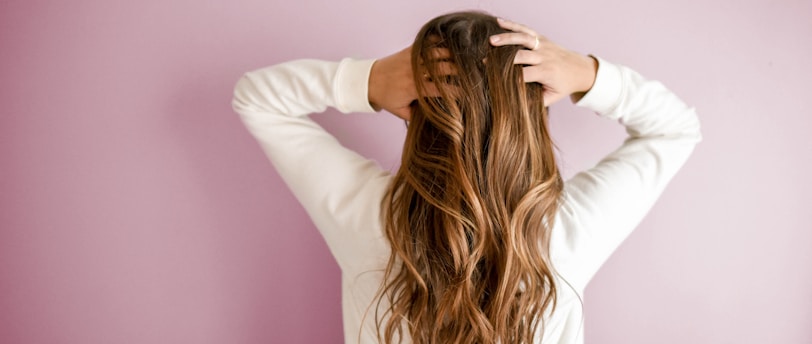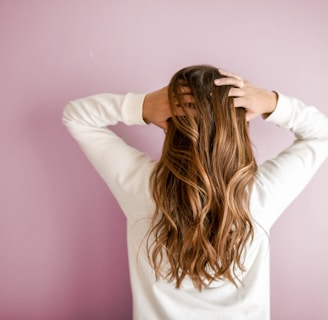Tips for Preventing Hair Damage in Pakistan
Learn effective tips for preventing hair damage in Pakistan. Discover how to protect your hair from damage and maintain healthy locks. Take care of your hair.


Introduction
Having healthy and lustrous hair is a desire shared by many individuals in Pakistan. However, with the harsh environmental conditions, frequent styling, and lack of proper hair care, hair damage has become a common problem. In this blog post, we will discuss some effective tips to prevent hair damage in Pakistan. By following these tips, you can maintain the health and beauty of your hair.
1. Protect Your Hair from the Sun
Pakistan's climate is known for its intense heat and strong sun. Exposure to the sun's harmful UV rays can cause significant damage to your hair, leading to dryness, brittleness, and color fading. To protect your hair, wear a hat or scarf when you are outside during peak sun hours. Additionally, consider using hair products with UV protection to shield your hair from the sun's harmful effects.
2. Avoid Excessive Heat Styling
Using heat styling tools such as straighteners, curling irons, and blow dryers regularly can cause severe damage to your hair. The high temperatures strip away the natural moisture from your hair, leaving it dry and prone to breakage. Limit the use of heat styling tools and opt for heat-free hairstyles whenever possible. When using heat styling tools, always apply a heat protectant spray or serum to minimize damage.
3. Follow a Proper Hair Care Routine
Establishing a regular hair care routine is essential for preventing hair damage. Start by choosing the right shampoo and conditioner for your hair type. Avoid products that contain harsh chemicals, sulfates, and parabens, as these can strip away the natural oils from your hair. Instead, opt for gentle, moisturizing products that promote hair health.
Additionally, make sure to wash your hair regularly to remove dirt, oil, and product buildup. However, avoid overwashing, as it can lead to dryness. Condition your hair after every wash to restore moisture and nourishment. Deep conditioning treatments once a week can also help to keep your hair hydrated and prevent damage.
4. Be Gentle When Brushing and Styling
Brushing and styling your hair vigorously can cause damage, especially when your hair is wet. Wet hair is more prone to breakage, so use a wide-toothed comb or a brush with soft bristles to detangle your hair gently. Start from the ends and gradually work your way up to avoid unnecessary pulling and tugging.
Avoid tight hairstyles that put excessive tension on your hair, such as tight ponytails, braids, or buns. These hairstyles can lead to hair breakage and traction alopecia. Instead, opt for loose hairstyles that allow your hair to breathe and minimize damage.
5. Trim Regularly
Regular trims are essential for maintaining healthy hair. Trimming helps to get rid of split ends and prevents them from traveling up the hair shaft, causing further damage. Aim to get a trim every 6-8 weeks to keep your hair ends healthy and prevent breakage.
6. Protect Your Hair While Sleeping
During sleep, your hair can get tangled and rub against the pillowcase, leading to breakage and frizz. To protect your hair while sleeping, consider using a silk or satin pillowcase. These materials create less friction and help to retain moisture in your hair. Alternatively, you can wrap your hair in a silk scarf before going to bed.
7. Eat a Balanced Diet
Healthy hair starts from within, so it's important to nourish your body with a balanced diet. Include foods rich in vitamins, minerals, and proteins, such as fruits, vegetables, lean meats, and fish. These nutrients provide the building blocks for healthy hair growth and help to prevent hair damage.
8. Limit Chemical Treatments
Chemical treatments, such as hair dyeing, perming, and relaxing, can cause significant damage to your hair. The chemicals used in these treatments can weaken the hair shaft and make it more prone to breakage. If possible, limit the use of chemical treatments or opt for less damaging alternatives, such as ammonia-free hair dyes or natural hair treatments.
9. Protect Your Hair from Chlorine and Saltwater
Chlorine in swimming pools and saltwater in the ocean can strip away the natural oils from your hair, leaving it dry and brittle. Before swimming, wet your hair with fresh water and apply a leave-in conditioner or hair oil to create a protective barrier. After swimming, rinse your hair thoroughly with fresh water to remove any chlorine or salt residue.
10. Seek Professional Help
If you are experiencing severe hair damage or hair loss, it is advisable to seek professional help from a dermatologist or a trichologist. They can diagnose the underlying causes of your hair problems and provide you with personalized advice and treatment options.
Conclusion
Preventing hair damage in Pakistan requires a combination of proper hair care, protective measures, and a healthy lifestyle. By following the tips mentioned in this blog post, you can maintain the health and beauty of your hair, even in the challenging environmental conditions. Remember, consistency and patience are key when it comes to preventing hair damage. Take care of your hair, and it will reward you with its natural shine and vitality.
